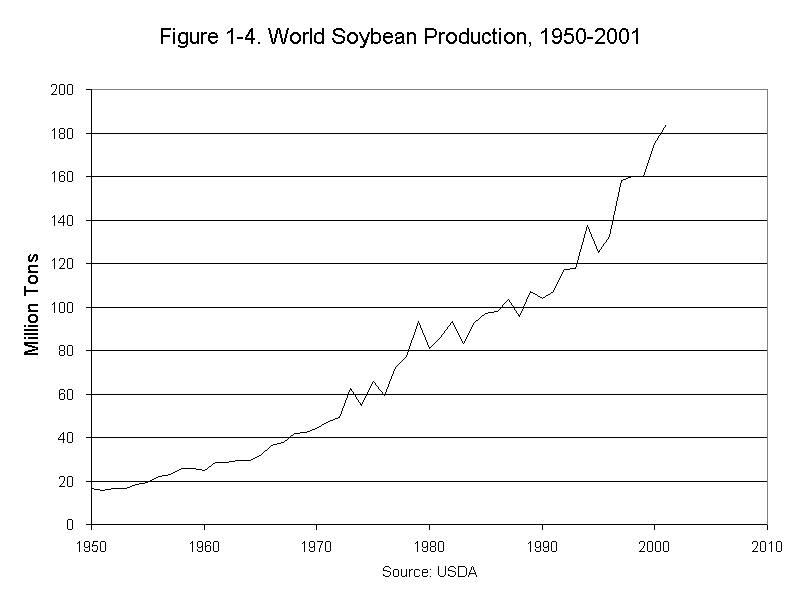Lester R. Brown, Janet Larsen, and Bernie Fischlowitz-Roberts
Part 1. Assessing the Food Prospect: The Soybean Factor
Closely related to these structural changes in the world food economy is the expanding role of the soybean, perhaps the best single indicator of the world growth in animal protein consumption over the past half-century. One of the keys to the efficient conversion of grain into animal protein is the incorporation of small amounts of high-quality protein, such as that found in soybeans, into the feed ration. A modest amount of protein supplementation can boost sharply the efficiency with which grain is converted into animal protein, sometimes nearly doubling it.
Protein supplements typically come from oilseed meals, the product of crushing soybeans, cottonseed, peanuts, or sunflower seeds to extract oil. Over the last 50 years, the soybean has emerged as the world’s dominant source of protein for supplementing livestock, poultry, and fish rations, exceeding all other high-protein meals combined. Between 1950 and 2001, the world soybean harvest expanded from 17 million tons to 184 million tons, a spectacular gain of nearly 11-fold. (See Figure 1–4.) 44
The soybean, domesticated by farmers in central China some 5,000 years ago, was introduced into the United States in 1804 when Thomas Jefferson was President. After languishing as a novelty crop for a century and a half, its production began expanding rapidly following World War II, climbing from less than 6 million tons in 1950 to 79 million tons in 2001, or 43 percent of the world harvest. Brazil, now in second place, produces 24 percent of the harvest, and Argentina 16 percent. China, which once dominated the world harvest, now accounts for only 8 percent. 45
In the United States, the harvested area of soybeans first overtook that of wheat in 1973 and that of corn in 1999. Most U.S. soybeans are produced in the Corn Belt, often in an alternate-year rotation with corn, which has a ravenous appetite for nitrogen. Since the soybean fixes nitrogen, its yields are not very responsive to the application of fertilizer. As a result, farmers get more soybeans largely by planting more land in soybeans. 46
China, whose soybean meal use is doubling every five years as meat and egg consumption climbs, and whose direct consumption of soybeans for food is also climbing, is now the world’s dominant soybean importer. Its principal supplier is the United States. The soybean connection between the country that gave the world the soybean and the one that made it into a world-class crop is likely to grow even stronger in the years ahead as China’s appetite for animal protein continues to climb. At issue is whether soybean production can continue to expand, supporting the growth in demand for animal protein without clearing additional areas of the Brazilian cerrado, where the expansion is concentrated. 47

*Data and additional resources have been omitted from this mobile version of our website to ensure the most optimal experience. To view this page with its entire information, please visit the full website.